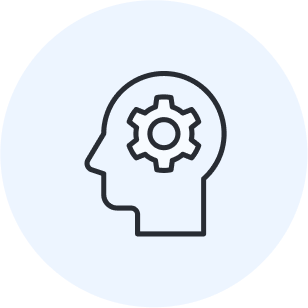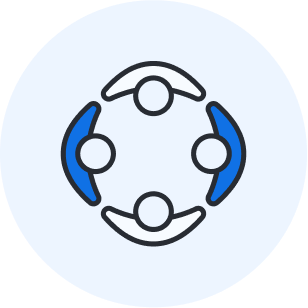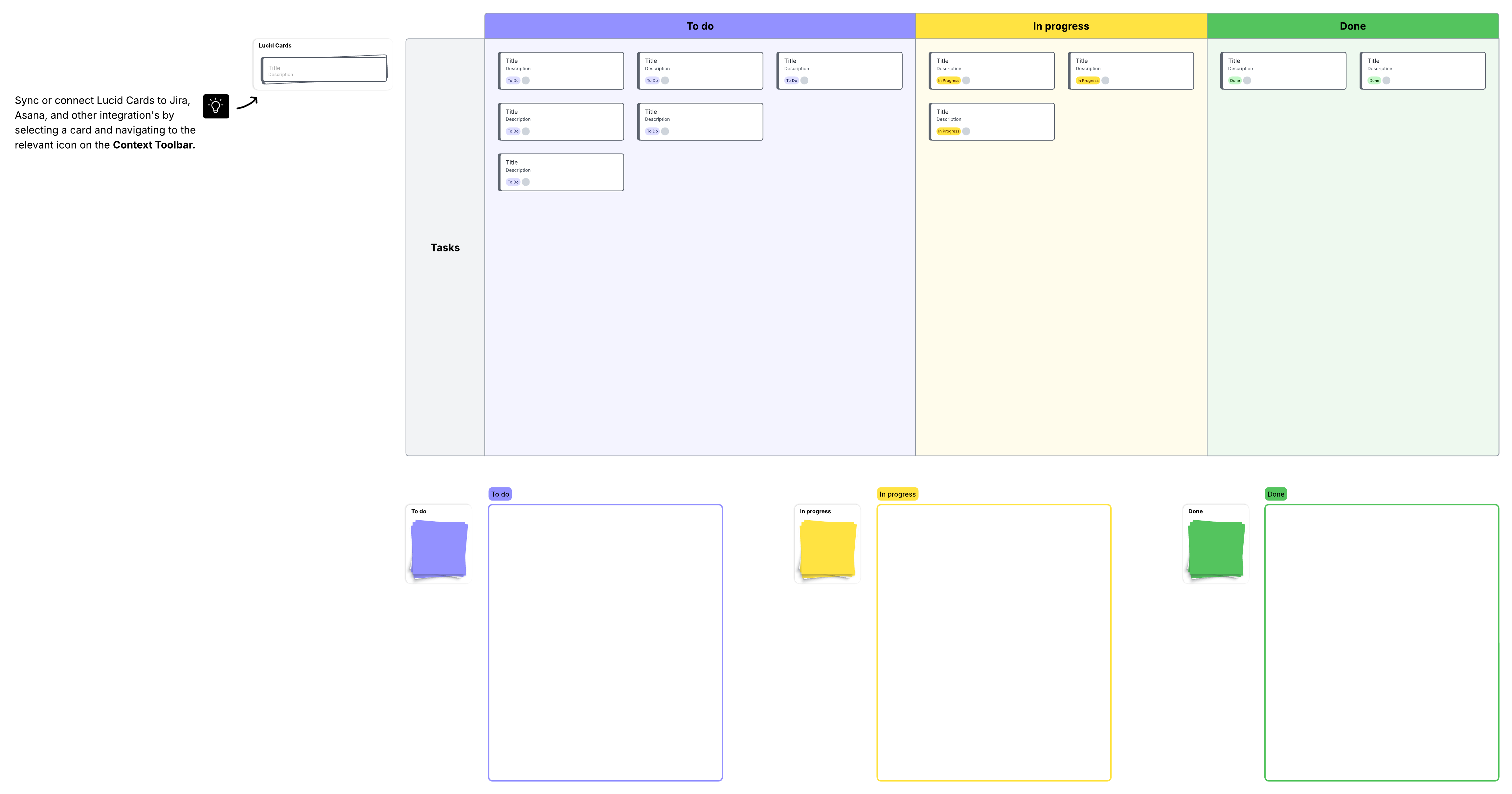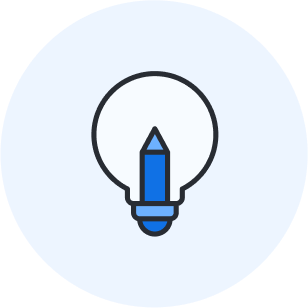New to Agile? No problem! Learn some Agile fundamentals and check out our resources for an introduction to Agile that’s beginner-friendly.
Agile 101
What is Agile? Agile is a mindset and a movement that has changed how people work, enabling businesses to enhance collaboration, increase adaptability, and deliver more value. Teams that use Agile thinking are better able to respond to change as they make incremental progress, learn from feedback, and focus on continuous improvement. Agile teams also operate at a more sustainable pace, preventing burnout.
The Agile mindset is based on the four values and 12 principles of the Agile Manifesto, which was written in 2001 by software practitioners. The Agile Manifesto is meant to guide decision-making and planning for all types of businesses.
There are different ways you can apply the principles and live the values of the Agile Manifesto in your workplace, beginning by identifying what needs to be improved or what your goals are for embracing Agile. Are you trying to enhance team alignment? Do you need to incorporate feedback more? Too many bottlenecks, slow project execution, and difficulty adapting to change are all things that practicing Agile can help improve.

Learn more about what Agile means
Learn the definition of Agile, its history, and how it applies to the modern-day workforce in this in-depth guide.
Read moreThe benefits of using Agile
Although Agile began for software development, it’s useful in any business context. Anyone can benefit from Agile—no matter what type of work you do.
There are multiple benefits to developing an Agile approach to work, including:
-
Continuous improvement and enhanced innovation
-
Better risk management, as well as improved adaptability and flexibility
-
Enhanced customer satisfaction
-
Faster time to market with a focus on delivering value
-
Better prioritization and problem-solving skills
-
Increased employee satisfaction and engagement
-
Improved collaboration and communication due to greater transparency
Agile fundamentals: An introduction to common frameworks
Agile frameworks help to provide structure for teams that want to apply the principles and values of Agile effectively. Frameworks are particularly beneficial for teams that are new to Agile. You can think of Agile frameworks as “starter kits” that introduce Agile and provide support as you learn more about applying Agile to your situation.
Some of the most widely used Agile frameworks are Scrum, Kanban, and Extreme Programming (XP).
Scrum
You may have heard of Scrum—it’s a very popular framework. For Scrum, teams complete work in sprints, which are usually two to four weeks long. Each Scrum team is made up of:
-
A Scrum master who ensures everyone understands and applies Agile, so the team can work together more effectively.
-
A product owner who manages and orders the product backlog, and also acts as liaison between the team and stakeholders.
-
Other team members (sometimes known as developers) who execute work from the backlog.
To manage work and align on goals, Scrum teams facilitate Agile events such as sprint planning, daily standups, sprint reviews, and sprint retrospectives.

Your guide to daily standups
Daily standups are a great way to start practicing Agile. Learn more about standups and how to facilitate them effectively in this guide.
Go nowKanban
Kanban is a visual management method for continuous process improvement. This Agile approach helps teams visualize and manage their flow of work while limiting work in progress. Kanban helps enhance team alignment by clearly showing what’s been completed, what�’s being worked on, and what should be done next. A Kanban board is a popular tool for visualizing workflow and implementing the Kanban method.

Extreme Programming
Extreme programming, or XP, implements disciplined software development practices to promote technical excellence. This Agile methodology takes engineering practices to their logical extreme—hence the name—while focusing on continually improving a product. While XP originated in software development, it can be used in other areas such as design, research, or creative teams since it promotes rapid feedback and continuous learning.

Learn all about Agile frameworks
Check out this in-depth guide that breaks down popular Agile frameworks and offers tips to help you choose the right one for your team.
Read nowAgile for beginners: Quick tips to get started
Looking to learn the basics and get started on using Agile in your workplace? Lucid has you covered. Our Agile development templates are an easy way to see what Agile values look like when they’re put into practice. Our templates also help you seamlessly facilitate Agile events, whether it’s team-level planning or program-level (like big room planning). Or, you can explore our blogs on Agile topics, covering everything from developing a more Agile team to implementing Agile leadership.
A great way to dive into Agile is by exploring the All-access Agile series, which features eight comprehensive guides that break down everything you need to know about Agile fundamentals. You can quickly learn about the Agile Manifesto, backlog management, and more with tips from Agile coaches Bryan Stallings and Jessica Guistolise.
Check it out to start practicing the Agile mindset—Agile is for everyone!

The All-access Agile series
Perfect for beginners, explore our extensive Agile guides, featuring expert tips from Agile development coaches.
Check it outAbout Lucid
Lucid Software is the leader in visual collaboration and work acceleration, helping teams see and build the future by turning ideas into reality. Its products include the Lucid Visual Collaboration Suite (Lucidchart and Lucidspark) and airfocus. The Lucid Visual Collaboration Suite, combined with powerful accelerators for business agility, cloud, and process transformation, empowers organizations to streamline work, foster alignment, and drive business transformation at scale. airfocus, an AI-powered product management and roadmapping platform, extends these capabilities by helping teams prioritize work, define product strategy, and align execution with business goals. The most used work acceleration platform by the Fortune 500, Lucid's solutions are trusted by more than 100 million users across enterprises worldwide, including Google, GE, and NBC Universal. Lucid partners with leaders such as Google, Atlassian, and Microsoft, and has received numerous awards for its products, growth, and workplace culture.
Related articles
How visual collaboration supports Agile teams
From increasing transparency to simplifying documentation, learn why Agile teams today rely on visual collaboration.
Traditional vs. agile leadership, explained
In this blog post we will explain traditional leadership vs. agile leadership and share some tips for becoming a more agile leader.
5 mistakes organizations make when applying Agile practices (+ how to avoid them)
Agile isn’t as simple as following a recipe. Get tips on how to avoid common mistakes and make Agile work for your team.
Journey to Agile: 5 implementation challenges to prepare for
Here are some common Agile adoption challenges you may encounter across your organization.

